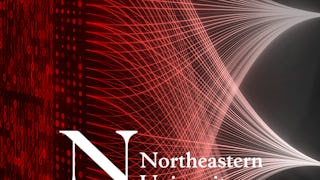This course offers students an opportunity to learn fundamentals of computation required to understand and analyze real world data. The course helps students to work with modern data structures, apply data cleaning and data wrangling operations. The course covers conceptual and practical applications of probability and distribution, cluster analysis, text analysis and time series analysis.



Foundations for Data Analytics Part 2

Instructor: Qurat-ul-Ain Azim
Access provided by Global Institute of Science & Technology
Skills you'll gain
Details to know

Add to your LinkedIn profile
13 assignments
July 2025
See how employees at top companies are mastering in-demand skills

There are 7 modules in this course
In this module, you will explore the realm of time series data, gaining a comprehensive understanding of its characteristics, components (trend, seasonality, and noise), and prevalent sources across diverse domains. Through effective visualization techniques and descriptive statistics, you will acquire the skills to recognize patterns and trends within time series data.
What's included
5 videos5 readings2 assignments
This module focuses on feature extraction in time series data analysis, emphasizing the identification and utilization of diverse features. We will explore how these features capture essential information, enabling a comprehensive understanding of time series data. You will gain practical insights into the application of various feature types, enhancing your ability to extract meaningful patterns and make informed analyses in the dynamic field of time series data analysis.
What's included
5 videos5 readings3 assignments
This module focuses on the comprehensive preprocessing and analysis of textual data. You will acquire practical skills in text data preprocessing, encompassing tasks such as tokenization, stemming, and stopword removal. We will discuss diverse methods for representing text data, including bag-of-words (BoW), Term Frequency-Inverse Document Frequency (TF-IDF), and word embeddings. We will also explore various text analysis techniques such as sentiment analysis, topic modeling, and named entity recognition. The practical application of these techniques enables you to extract meaningful insights, patterns, and nuanced meanings from textual data, empowering you to navigate and derive value from the intricate landscape of text analysis.
What's included
2 videos2 readings2 assignments
In this module, we examine network theory, equipping you with a foundational understanding of nodes, edges, and graphs. We will explore various network types, from social networks to keyword co-occurrence networks, learning to discern their relevance in diverse domains. Practical application includes extracting and creating keyword co-occurrence networks from text data through preprocessing, keyword identification, and relationship construction. You will then analyze these networks, employing measures like centrality and community detection, enhancing your ability to interpret results. This module culminates in the extraction of meaningful insights, enabling you to identify keywords and thematic clusters within textual data through the lens of network analysis.
What's included
3 videos3 readings2 assignments
In this module, we examine network theory, equipping you with a foundational understanding of nodes, edges, and graphs. We will explore various network types, from social networks to keyword co-occurrence networks, learning to discern their relevance in diverse domains. Practical application includes extracting and creating keyword co-occurrence networks from text data through preprocessing, keyword identification, and relationship construction. You will then analyze these networks, employing measures like centrality and community detection, enhancing your ability to interpret results. This module culminates in the extraction of meaningful insights, enabling you to identify keywords and thematic clusters within textual data through the lens of network analysis.
What's included
2 videos4 readings2 assignments
In this module, you will inspect the intricate world of joint probability distributions. You will develop the skill to identify and interpret these distributions, employing probability mass functions (PMFs) for discrete variables and probability density functions (PDFs) for continuous variables. This module will further equip you with the capability to calculate and interpret marginal probability distributions, involving the summing or integrating of variables within a joint distribution. The theoretical insights and practical calculations will help you gain a complete understanding of the relationships between variables and the nuanced exploration of joint, marginal, and conditional probability distributions.
What's included
1 video2 readings1 assignment
In this module, you will explore the fundamental concept of mathematical expectation, or expected value, in probability theory. Through theory and practice, you will calculate the expected value for both discrete and continuous random variables, gaining insights into its significance as a measure of central tendency. We will also explore the statistical concepts of covariance and correlation, guiding participants in the calculation of coefficients to quantify relationships between pairs of random variables. Interpretation of these results allows you to classify the degree and direction of association through positive, negative, or zero covariance/correlation values. Additionally, the module addresses the concept of independence, elucidating its relationship with zero covariance and correlation.
What's included
3 videos5 readings1 assignment
Instructor

Offered by
Why people choose Coursera for their career




Explore more from Data Science

Northeastern University




